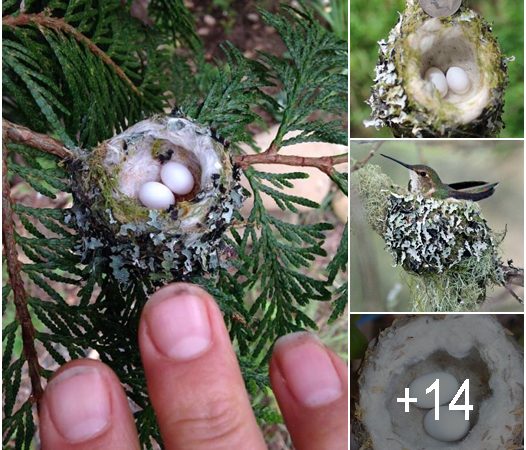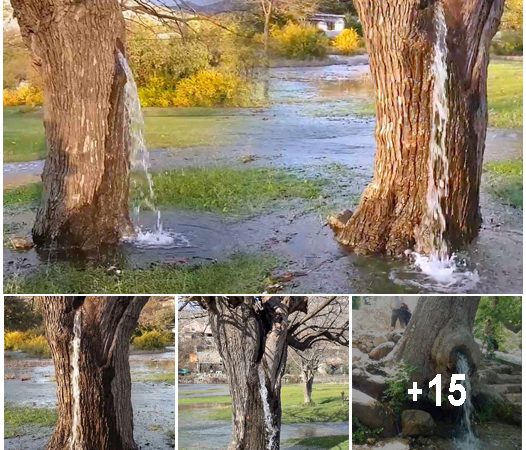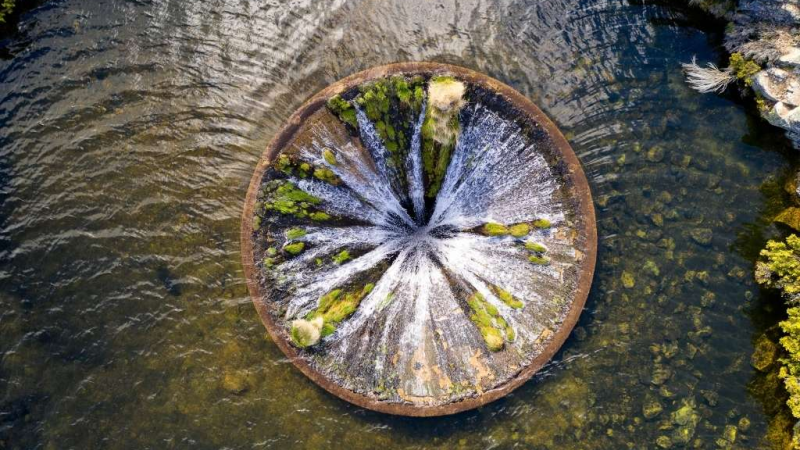“Living Sculptures at The Lost Gardens of Heligan: Evolving Masterpieces Year-Round”
In the enchanting region of Cornwall in Southwest England, a place where legends of King Arthur and fairytales come to life, lies the mystical Lost Gardens of Heligan. Spanning a vast 200 acres, this garden restoration project is a haven for adventurers, botanical enthusiasts, and dreamers alike.
Within the realms of Heligan, a world of hidden wonders awaits, and among them, two iconic sculptures, the Mud Maid and the Giant’s Head, crafted by the talented brother-sister duo, Pete and Sue Hill, take center stage. These living sculptures have become integral parts of The Lost Gardens, captivating visitors with their ever-changing beauty.
The Mud Maid, in particular, is a captivating masterpiece that evolves with the passing seasons, reflecting the cyclical nature of life. Created with love and skill, she stands as a symbol of nature’s transformative power, drawing visitors into her enchanting world.
The Mud Maid: Nature’s Living Sculpture
The Mud Maid, lovingly sculpted by Pete and Sue Hill, is a remarkable creation nestled within the embrace of The Lost Gardens of Heligan. Crafted with meticulous attention to detail, this living sculpture adds an air of mystery to the woodland experience, inviting visitors to embark on a journey of discovery.
Constructed using a framework of timber and windbreak netting, the Mud Maid’s form is brought to life with layers of sticky mud. Her face, a captivating blend of mud, cement, and sand, reflects the artists’ dedication to their craft. To encourage the growth of lichen, the sculpture was originally coated with yogurt, adding to her natural allure.
As the seasons change, so does the Mud Maid’s appearance. Her “attire” and “hair” transform with the flourishing and fading of grass, ivy, and moss. During spring and summer, she radiates vibrant energy, while in autumn and winter, she embraces a completely different essence. This dynamic transformation is a testament to the ever-evolving beauty of nature.
A Glimpse into History
To fully appreciate the significance of the Mud Maid and The Lost Gardens of Heligan, it’s essential to understand their historical context. The gardens, originally established by the Tremayne family in the 18th century, were once tended by a team of 22 skilled gardeners. However, the outbreak of World War I led to a significant shift in priorities, as many of the gardeners left to serve in the war and were not replaced upon their return.
This shift marked the beginning of the estate’s decline, and over the years, the gardens fell into a state of neglect and obscurity. It wasn’t until decades later that efforts to restore and rejuvenate this hidden gem began in earnest.
The Lost Gardens’ Living Sculptures
Today, The Lost Gardens of Heligan stand as a testament to the power of restoration and revitalization. The living sculptures of The Mud Maid and The Giant’s Head, along with many others, attract thousands of visitors to this 400-year-old garden paradise every year. They serve as a living reminder of the beauty that can be uncovered when nature is allowed to flourish and when the artistic vision of talented creators like Pete and Sue Hill is realized.
A Glimpse of Late Spring
As we admire the captivating image captured by Daderot, showcasing the Mud Maid in late spring, we’re reminded of the importance of giving credit to the talented photographers who bring such beauty to our screens. This photograph, with its intricate details and vibrant colors, serves as a visual testament to the captivating allure of The Lost Gardens of Heligan.
In conclusion, The Lost Gardens of Heligan, with its living sculptures like the Mud Maid, offer a unique and ever-changing experience that celebrates the beauty of nature and the creativity of human artistry. As visitors wander through this enchanting garden, they are not only witnessing the evolution of living sculptures but also connecting with the timeless cycle of life and growth that defines the natural world.


Hits: 789
















